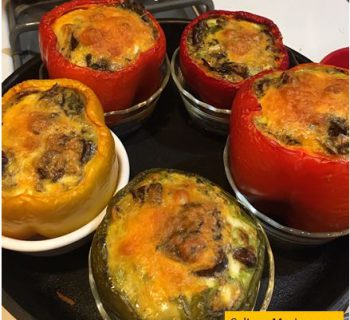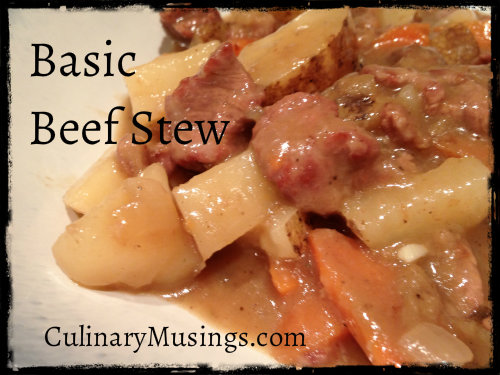More Flavor, Lower Cost, Less Salt
As days grow shorter and nights grow colder, a steaming pot of soup is a welcome addition to most supper tables. Food manufacturers make it easy; powdered, canned, jarred, and even frozen soups crowd grocery store shelves. But the price of convenience can be high for people on special diets. Most prepared soups are high in sodium. Low-salt and salt-free brands sound great – until you check the price and fat content of many varieties.
So why not make your own soup? It's easier than you think – and tastes better than you ever imagined!
Good Soup Requires A Good Stock
The basis of any soup is a good stock. Many good, flavorful stocks can stand on their own as a light soup or broth. The key is to use good ingredients and simmer slowly to intensify the flavors.
Here are a few tips for creating a great stock:
Good ingredients: Stock is your opportunity to use leftover vegetables and vegetable trimmings. Save a week's worth in the refrigerator, and you'll probably have the basic ingredients for a simple stock. But don't use brown or spoiled food. If you wouldn't eat it outside the stock, it's not a good idea to cook with it either.
Roast or saute vegetables first: Roasted vegetables add more flavor and depth to stock. Sauté onions in a little butter or olive oil until soft before adding liquid to the stock. This sweetens their flavor and prevents sharp-tasting, half-cooked onions from floating to the top of your stock.
Chop carefully: Always chop vegetables into uniform chunks (no larger than 1-inch cubes), so they cook evenly. Smaller is better because larger surface areas release more flavor. If you buy organic vegetables, it's not necessary to peel them.
Smoky flavors without meat: Many cooks add a bit of salt pork or bacon to soups for a smoky flavor. Two salt-free (and vegetarian) substitutes are: dried marjoram (approx. ½ t per cup of liquid) and black cardamom pods (1 pod per every 4 cups liquid).
Add fresh herbs at the end: This preserves their delicate flavor, keeping it from just wilting into the background.
Be bold! Don't be afraid to experiment. Soups are incredibly forgiving and lend themselves to substitutions and last-minute changes.
Vegetable soup stocks are versatile. Use stock to form the base of a more complex soup or sip the hot broth to relieve cold symptoms. Replace cooking water with stock to add extra flavor to rice, pasta, and vegetable dishes.
Warm and Tasty Vegetable Stock Recipes
Many recipes for homemade soup begin with bullion cubes or soup base powder, but many of these list salt and/or monosodium glutamate as their main ingredients. These recipes use vegetables, herbs, spices, and various cooking techniques to infuse the stock with flavor – without loading it up with salt.
- 1-2T unsalted butter or olive oil (butter adds a nice flavor without much extra fat)
- 1 large sweet onion, peeled and chopped into ½ inch chunks
- 4 celery stalks (including leaves – they add lots of flavor!), chopped
- 2 carrots, peeled and chopped (it's ok to include carrot tops, but not the greens)
- 1 head garlic, sliced in half (remove outer skin around the bulb, but don't peel every clove)
- 2 bay leaves
- ½ t salt
- ¼ to ½ t poultry seasoning (to taste; add ¼ t first, then taste before adding more)
- 4-5 cups water (to taste; less water intensifies the flavor)
- ½ cup minced fresh parsley
- Place butter/oil in a heavy-bottomed pot (preferably a stockpot) and heat over medium heat. Add onions and cook until soft (3-5 minutes).
- Add celery, carrots, garlic, bay leaves, and water.
- Bring to a boil. Reduce heat and simmer, uncovered for 30 minutes.
- Add parsley and simmer for another 10-15 minutes.
- Strain and add broth to soup.
- This makes a good soup all by itself. Just remember to remove the garlic bulb before serving.
Variations:
Tomato stock: This is a great base for vegetable soup.
Reduce water by 2 cups and add 2 cups chopped, canned tomatoes.
OR add 3-4 T salt-free tomato paste.
Mexican tomato stock: This makes a savory cooking broth for Mexican rice.
Add ½ cup chopped cilantro
Add 1-2T chili powder (to taste).
- 1-2 T olive oil
- 3 large carrots, quartered
- 2 large sweet onions, peeled and quartered
- 4 celery stalks, cut in half
- 3 medium potatoes, quartered
- 1 head garlic, sliced in half (remove outer skin around the bulb, but don't peel every clove)
- 2 bay leaves
- 1 t dried thyme
- 1 t dried sage
- 4-5 cups water
- ½ cup minced fresh parsley
Preheat oven to 400°. Spray a 9x13 baking dish with cooking spray. Place carrots, onions, celery, potatoes, and garlic in a mixing bowl and add olive oil. Toss vegetables to coat them with oil. Bake the vegetables until they're dark brown (they'll almost look burned). This takes about 40 minutes. Place the roasted vegetables in a heavy-bottomed soup pot and add 4 cups water, bay leaves, thyme, and sage. Pour the other cup of water into the hot baking pan and use a spatula to scrape up the remains of the roasted vegetables. Add this mixture to the soup pot. Bring the stock to a boil, then reduce heat and simmer 30 minutes. Add parsley and simmer another 10-15 minutes.
This recipe also makes a good soup by itself, or you can strain it and use the stock in broth-based soups like Minestrone or other bean soups. If you strain it, press the remaining vegetables to release most of their liquid; you'll get more stock and more flavor.
Variations:
Winter vegetables: Add chopped sweet potatoes, butternut squash, or acorn squash and roast with the other vegetables.
Lentils: Add ½ cup in step 4. Lentila cook quickly and create their own savory broth that complements the roasted vegetable flavors. Use brown lentils; the green & red varieties tend to get mushy.
Bean soup: If you serve this as a soup by itself, add 2 cups cooked red beans, pintos, or white beans (or a combination). This adds a lot of protein and fiber to the soup.
- 1T olive oil
- 1 large sweet onion, peeled and sliced thinly
- 10-12 white mushrooms, washed and sliced
- 1 cup loosely packed dried shiitake mushrooms, rehydrated in 1½ cups warm water (takes about 30 minutes)
- 1 ½ T fresh chopped ginger
- 1 star anise (whole, not ground)
- ½ t dried lemongrass
- 1 whole dried cayenne pepper (optional)
- 3 cups water
Heat olive oil in heavy-bottomed pot on medium heat. Add onions and cook until soft (3-5 minutes) Add remaining ingredients (remember to add the shiitake soaking water) and simmer for about 30 minutes. If the flavor is too intense, add more water to the stock, ½ cup at a time.
Use this as a base for Asian-themed soups that use tofu, bok choy, snow peas, and other Asian vegetables. It's also an excellent base for stir-fry and marinade sauces.
To serve as a soup by itself:
Finely chop the onions before cooking.
Add 1 cup thinly sliced cabbage or bok choy 5 minutes before serving.
Add 1 cup sliced, extra-firm tofu (for added protein).
Remove the anise star and pepper before serving.
Homemade Stock Freezes Well
Each recipe is ready to serve immediately, but consider making a double recipe of your favorites. These freeze well, and you can store them 1-2 cup portions for future soups.
Because the stocks can be used in so many different ways, take part of the stock and freeze in ice cube trays or small muffin tins. Use the individual servings as needed in sauces, vegetables, pastas, rice pilafs, and any other recipe where you'd be tempted to reach for a bullion cube other salt-laden alternative.
These recipes are just a starting point: feel free to be creative! Most soups and stocks don't require a formal recipe. Experienced cooks quickly learn that a glance in the refrigerator and quick pantry inventory is all that's needed.
Try it yourself. You'll be surprised at how easy it is to create healthy soups packed full of flavor and nutrition – instead of salt.
Want to try other delicious low salt recipes? We especially recommend our "No salt seasoning".






HeartCare (Low Sodium Salt) is a salt substitute. A low-sodium food additive that tastes like salt. It is used as a dietary alternative to salt.
Low Sodium Salt is high in natural potassium. It is specially developed to reduce sodium intake. Lower sodium in diets may help in management of high blood pressure, maintaining normal body weight & promoting physical activity.